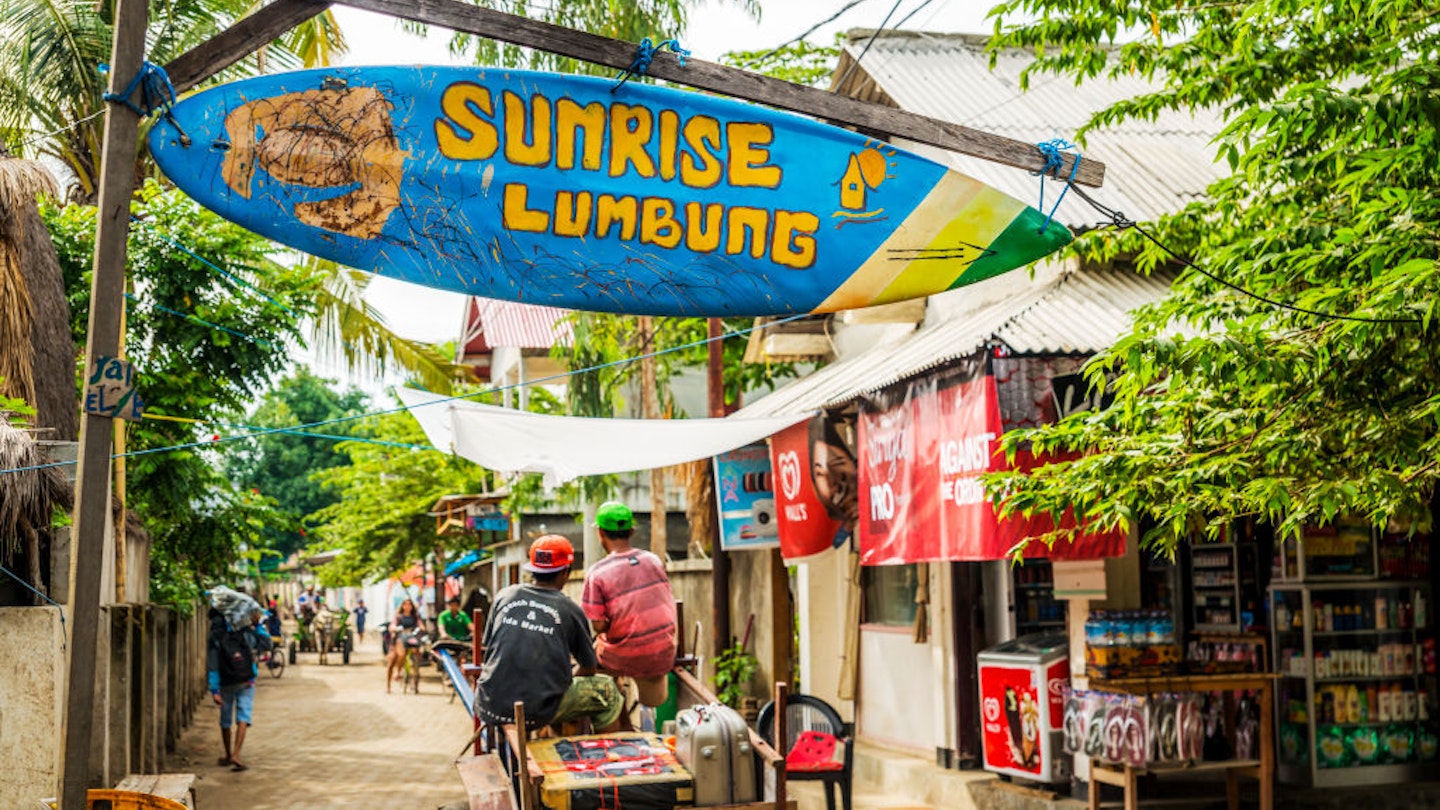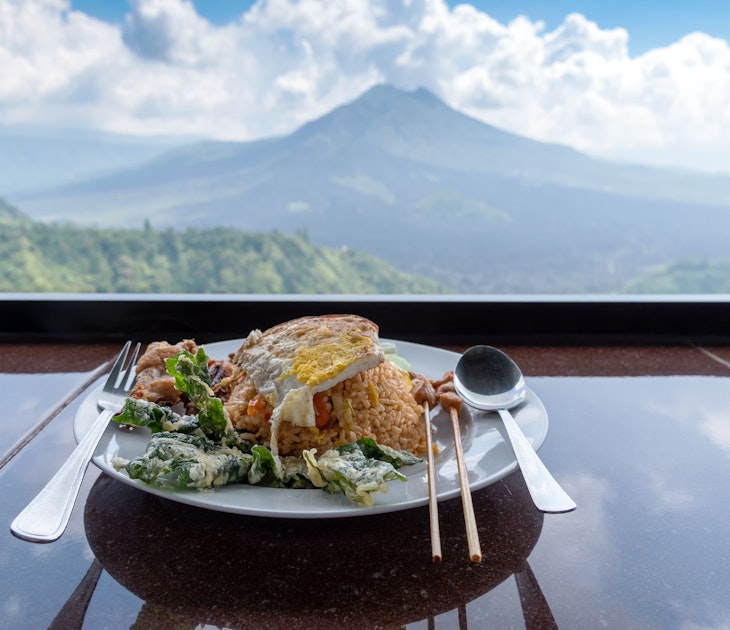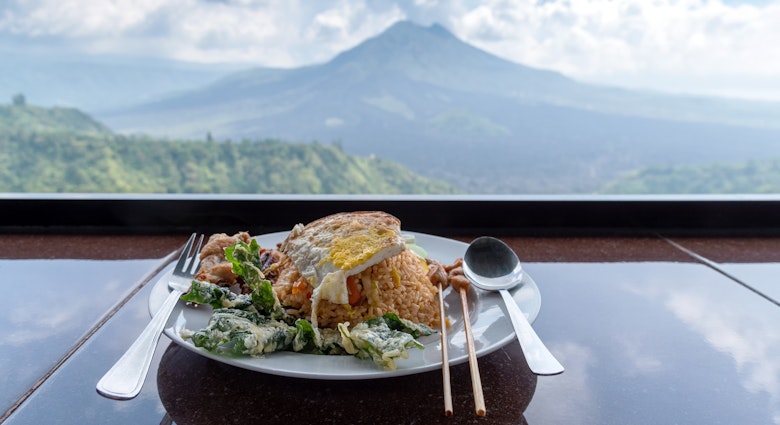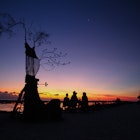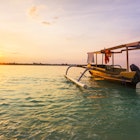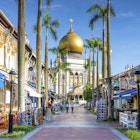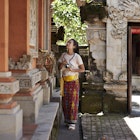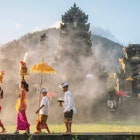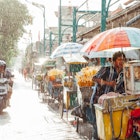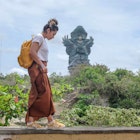These three islands off the coast of Lombok are the ultimate tropical escape, where you can fully disconnect amongst the palm trees and powdery beaches. Thanks to a ban on motor vehicles, the islands feel like a whole world away from Bali’s crowded streets, allowing you to soak up the peaceful atmosphere no matter when you visit.
As a rule of thumb, Indonesia has two seasons: the wet season and the dry season. While it varies in each region, the dry season in central Indonesia (Bali, Lombok and the Gili Islands) runs from April to September. This is the best time to enjoy the beaches and other outdoor activities. If you visit during the wet season (October to March), expect hot and humid days, tropical downpours and occasional thunderstorms.
That said, the weather in the Gili Islands isn’t as extreme as other places in Indonesia. The islands have their own microclimate and experience less rain than mainland Lombok.
Temperatures remain constant throughout the year, ranging between 27°C and 32°C (80°F to 90°F). To get the most out of your trip, here are the best times to visit.
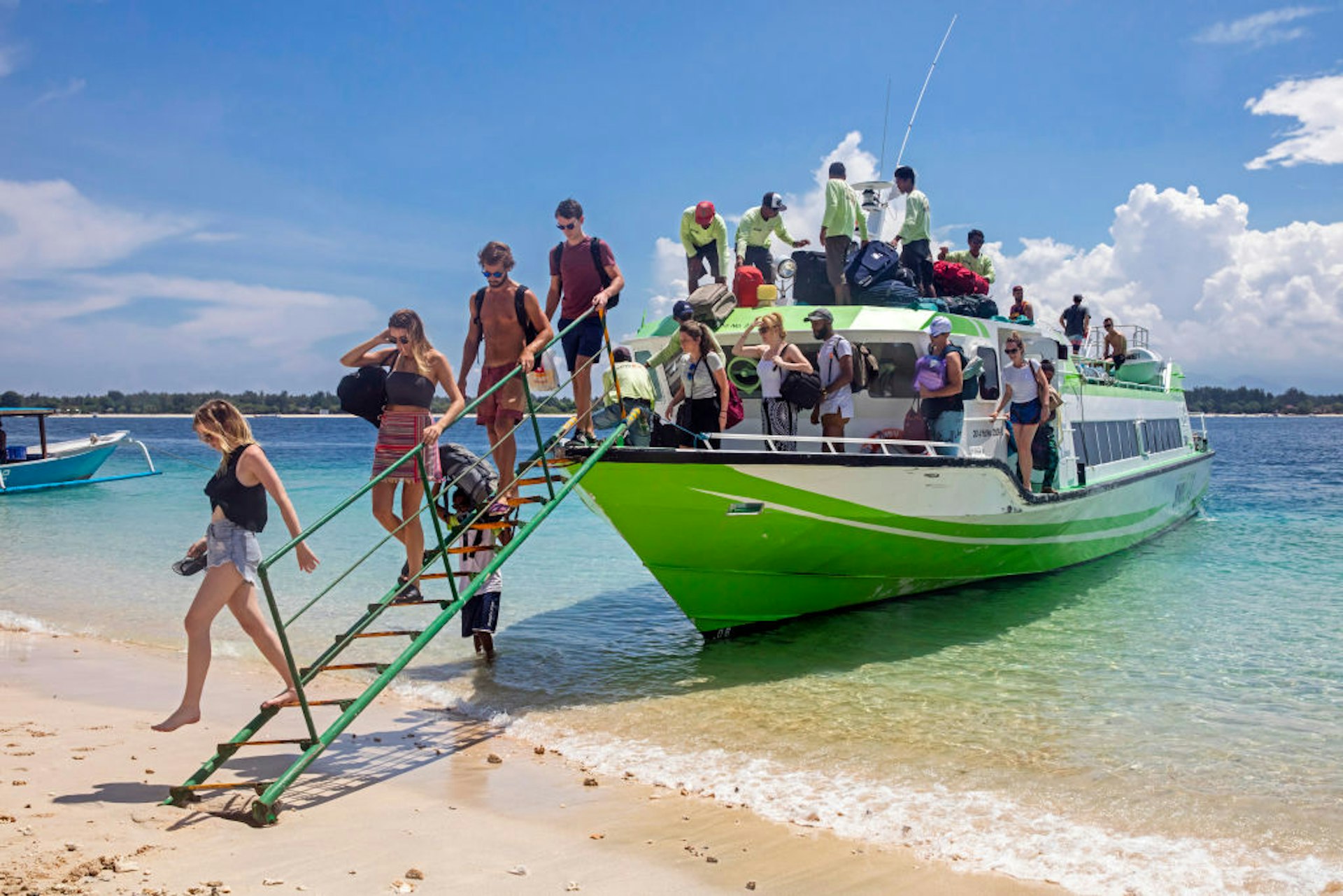
July, August and December are the busiest months
July and August is peak tourist season in the Gili Islands, which coincides with the height of the dry season. It’s also when most of the northern hemisphere enjoys its summer vacations, so the islands see their fair share of European and American tourists.
For nightlife, Gili Trawangan is the place to be. It certainly lives up to its reputation as a party island, with clubs, pubs and beach bars offering parties every night of the week. Gili Air has a more relaxed party scene, with a great selection of beach bars playing chilled out beats. If you’re not interested in partying but still want to visit the Gili Islands in high season, Gili Meno is the best pick for you. Known as the “honeymoon island”, it remains extremely quiet – the perfect place to unplug and unwind.
August 17th is Indonesia’s Independence Day, a public holiday where local villages will hold traditional games and competitions. It’s a fun way to learn about the local culture, and visitors are welcome to join in the celebrations.
December is another busy month for the Gilis, especially with Australian visitors enjoying their summer holidays, as well as those celebrating Christmas and New Year.
Although Islam is the main religion in Indonesia, Christmas is still celebrated in tourist hotspots, with hotels and restaurants offering festive menus and parties. Keep in mind that December is the height of the wet season, so expect rain and cloud, usually starting in the afternoons.
While the crowds add to the lively and festive atmosphere, the large number of tourists is also a downside to visiting in July, August and December. It may be more difficult to get a seat at bars and restaurants, and diving and snorkeling sites will be crowded. You should also be prepared to pay inflated rates for accommodation.
Not sure where to base yourself? Read on for how to choose the best Gili island

April to June plus September are best for avoiding a crowd
Visiting either side of the peak summer months is a good way to beat the masses and high summer prices. The shoulder season also coincides with the beginning and end of the dry season in the Gili Islands.
April through to June is dry and sunny, with great conditions for outdoor adventures. It’s also a few degrees cooler thanks to the Australian winter. Although waves are slightly larger due to stronger winds, water visibility is excellent, so snorkelling and diving are a must. May to September is the best time to surf, and although the islands aren’t well-known for surfing, there are still a handful of fun waves and rental shops across the three islands.
Although the summer holidaymakers haven’t arrived yet, the two-week Easter break can get quite busy. Nyepi (Balinese Day of Silence) is observed according to the lunar calendar, falling between March and April each year. As everything in Bali closes and it’s forbidden to leave the house, many tourists choose to escape to the Gilis for a few days.
In September, the crowds start to thin and the beaches aren’t as packed. It’s nearing the end of the dry season, but you can still enjoy amazing weather. The Gili Festival takes place on Gili Trawangan each September, a four day celebration featuring traditional Sasak cultural performances, live music, art exhibitions, foodie events and competitions.

October to November and January to March are best for budget travelers
October marks the start of both the rainy season and the low season in the Gili Islands. The crowds have all but disappeared, and the islands are quiet and relaxed for a couple months before a small spike in December and over the new year. While you can still enjoy the beaches in the mornings, there’s plenty to do on wet afternoons, such as yoga classes, beauty treatments in the many spas, or traditional cooking classes. Accommodation prices have come down too, and you’ll often get deals on day trips.
Bear in mind that although you can still snorkel and dive, the wet season means that water visibility isn’t quite as clear. If you’ve exhausted your options and are looking for more indoor activities, take a day trip to Lombok where you can visit the museum and go souvenir shopping at the local markets (or one of the larger shopping malls in Mataram, complete with a cinema).
Chinese New Year falls between January and February. This is a big public holiday throughout Indonesia, and the Gilis are a popular destination for local tourists to spend a few days.
A word on Ramadan
The Islamic month of Ramadan varies annually, moving forward by ten days each year. During this time most of the locals will be fasting throughout the day, meaning that warungs (local eateries) across the Gilis and Lombok are closed until evening. However, restaurants and activities geared towards tourists usually remain open and operational as normal during this time.
